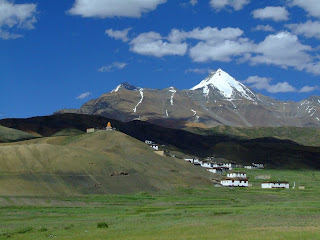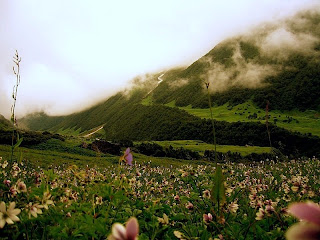Lahaul and Spiti: Himachal Pradesh
Lahaul and Spiti is a district of Himachal pradesh in India. Lahaul tends to be a bit more green and fertile, while Spiti is mostly stark high-desert.
Most sparingly populated region, Lahaul and Spiti in Himachal Pradesh is located in the southern side of Ladakh. The surrounding snowline, climate, sky-touching mountain ranges, Buddhist monasteries and outstanding scenic beauty have made this place calm and truly grandiose
.
Cities
Kaza – the regional headquarters of Spiti district.
Keylong – the regional headquarters of Lahaul district.
Other destinations
Kibber – a small village at alt. of 4200 m, starting point of the Tso Moriri trek
Ki – the Ki Monastery
Pin Valley – Beautiful valley best place to get a glimpse at rare snow leopard in winter
Chandra Taal – Origin of Chandra river , a big and beautiful lake 7 km away from kunzum pass ideal place for camping in summer
Tabo – a charming little village set around a monastery
Route to Reach
The common way to travel to Lahual is through ‘Rohtang La’ mountain Pass from Manali and to visit Spiti valley, you have to go from Lahual via ‘Kunzum Pass’, a 4551 metres elevated mountain Pass.To enjoy the unspoiled beauty of Spiti, entry from Manali via Rohtang and Kunzum La is ideal, the high altitude desert landscape with virtually no civilisation till Kaza is a sight to behold. There is bus service from Manali to Kaza, subject to weather conditions (open passes), please check with Himachal Roadways at Manali. After passing Rohtang pass (two hour drive from Manali) one away from civilization till next stop at Kaza, eight to ten hours away, Highest point on the road is snow covered Kanzum pass (14931 ft), nearly five hours from Rohtang pass, provide breathtaking view of Shigri Glacier. Just before Kaza signs of civilisation reappear. On the way just before the climb of Kanzum La (La means mountain pass) starts at Batal, the road bifurcate for Chandra Tal (approx 10 km/2-3 hours), where basic camping facilities are available and time permitting, deserves a visit especially during full moon. it is advisable to hire a SUV from Manali. Nearly all tour operator provide service, prices fluctuate so do bargain and ask for a deal with accommodation Kaza and other places you intend to visit in valley. Insist on a experienced local driver from valley, as they understand the weather and topography, also ensure that SUV is in good condition.
The alternative entry is from Shimla (Capital of Himachal Pradesh) side from Kinnaur valley which more comfortable all weather road till Kaza, the route is longer and captivating but landscape is typical Himalayan, unlike the route from Manali. If taking Shimla route plan for overnight stay along the way preferably at Reckong Peo. Please not that you do need an inner line permit to travel on part of this road.
Accommodation beyond Manali and Shimla is very basic although Kaza does offer some better options with opening of few new Hotels but don’t have high expectations.
Caution
Sea-buckthorn also called Leh Berry grows in wild, ask locals before eating. At high altitude fresh water from snow is refreshing, but don’t drink before consulting local residence.
Bus drivers can be far less careful than you would like, especially on windy mountain roads. But government buses seldom meets accident as they have experience on those roads, private buses may be at risk.
Take care when heading out trekking, it's easy to get lured into thinking you're out for an easy stroll, but make sure you've got enough food and water for the whole trip and then some. Be sure not to wander on unknown tracks, u may get lost in cold desert, make sure someone know where you are going.
Images























